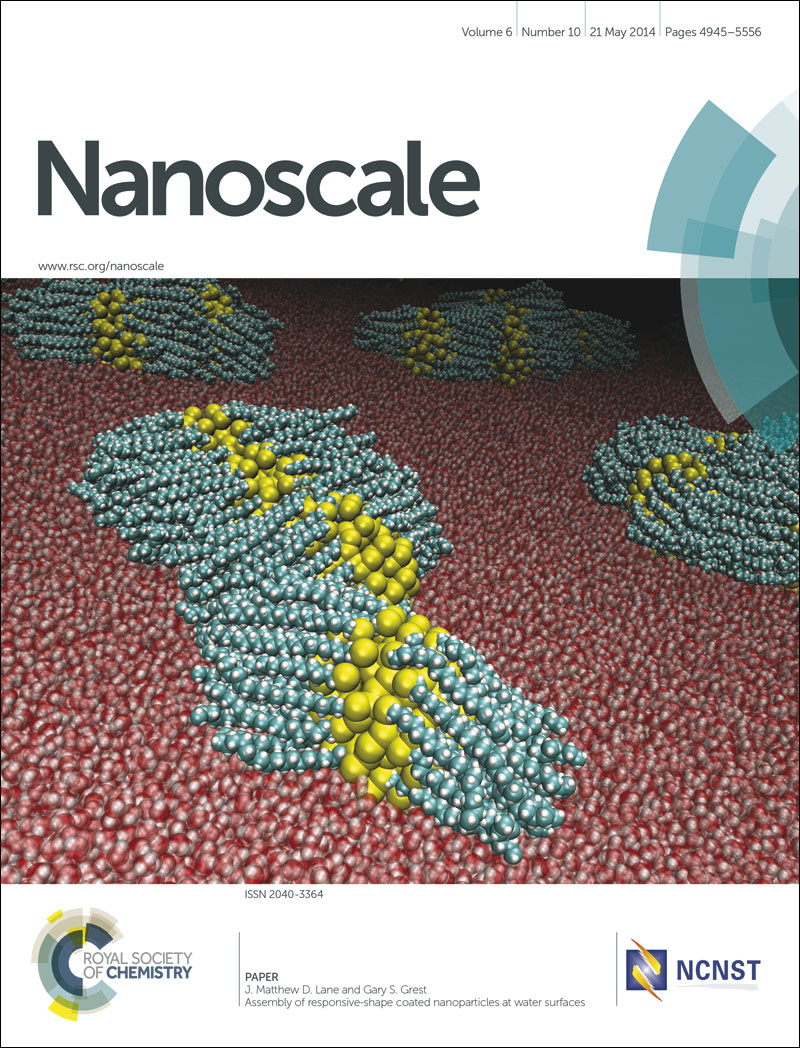Phase transitions of a water overlayer on charged graphene: from electromelting to electrofreezing†
Abstract
We show by using molecular dynamics simulations that a water overlayer on charged graphene experiences first-order ice-to-liquid (electromelting), and then liquid-to-ice (electrofreezing) phase transitions with the increase of the charge value. Corresponding to the ice–liquid–ice transition, the variations of the order parameters indicate an order–disorder–order transition. The key to this novel phenomenon is the surface charge induced change of the orientations of water dipoles, which leads to the change of the water–water interactions from being attractive to repulsive at a critical charge value qc. To further uncover how the orientations of water dipoles influence the interaction strength between water molecules, a theoretical model considering both the Coulomb and van der Waals interactions is established. The results show that with the increase of the charge value, the interaction strength between water molecules decreases below qc, then increases above qc. These two inverse processes lead to electromelting and electrofreezing, respectively. Combining this model with the Eyring equation, the diffusion coefficient is obtained, the variation of which is in qualitative agreement with the simulation results. Our findings not only expand our knowledge of the graphene–water interface, but related analyses could also help recognize the controversial role of the surface charge or electric field in promoting phase transitions of water.


 Please wait while we load your content...
Please wait while we load your content...